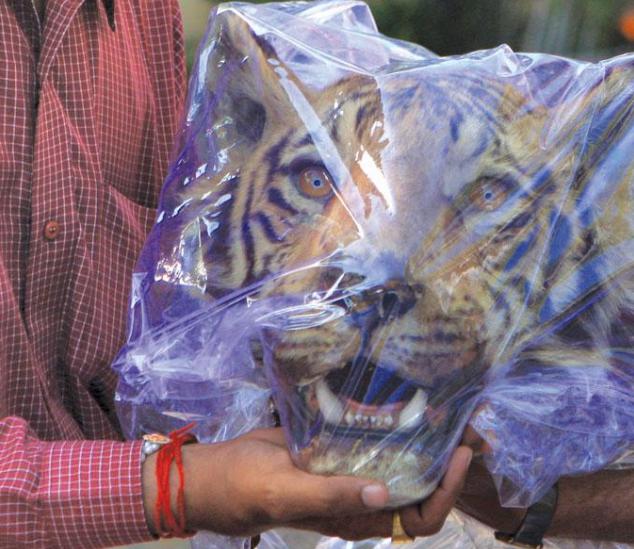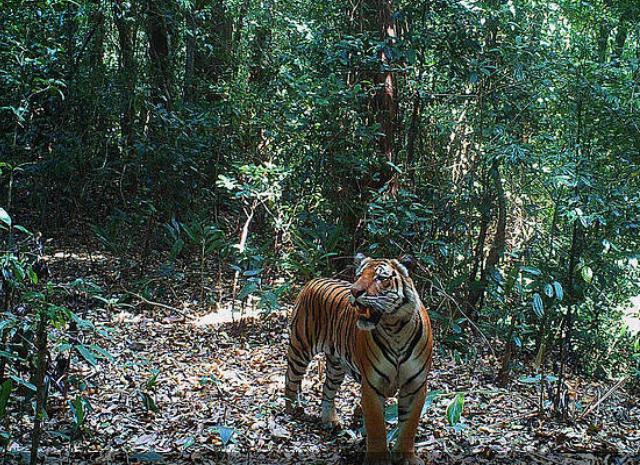India may have claimed to have the highest number of tigers in the world; it also has the maximum number of poaching cases reported from its jungles. The country has 70 % or 2,967 of the global tiger population of 4500. The central Indian state of Madhya Pradesh with the biggest tiger population in the country seems to be the hottest poaching spot as a report revealed that it is leading the list of the states with high rate of tiger poaching.
Poaching Crisis Deepens
Also read: Shouldn’t The Record Number Of Tiger Deaths Be A Cause Of Concern?
“Throughout this report, the number of tigers confiscated refers to the minimum number of tigers estimated to have been seized”, it said . Over two decades is a considerable time frame for data aggregation, with numerous global changes in tiger protection and management interventions, as well as wider economic, political, and social changes. The report said that “Over 77% of all seizure incidents or 1,688, known to TRAFFIC occurred within Tiger Range Countries (TRCs) topped by India, China, and Indonesia”. Other TRCs include Bangladesh, Nepal, Malaysia, Thailand, Myanmar, Bhutan , Cambodia , Vietnam Lao People’s Democratic Republic (PDR) and Russia. Among non-range countries, a sizable number of seizure incidents were reported by the UK, as well as the Netherlands and Germany. Information from non-TRCs was primarily attributed to transparency and data-sharing agreements with TRAFFIC, the report said.
Tiger A Commodity
After poaching, the tiger and its body parts are smuggled out mostly to China and other Far East countries including Thailand and Vietnam. The USA among others is also a bog market for tigers. In China, the tiger is consumed in many ways and its body parts continue to be the main ingredient for Chinese traditional medicines. According to the TRAFFIC report,, tiger skins and bones have been consistently the “top confiscated commodities” over the years, with “whole tigers” also featuring prominently. “Similarly in this study as well, whole tigers (dead and alive), their skins and bones were the most frequently confiscated commodities across almost all regions. By individual item, tiger bone was the most sought-after commodity type by volume, with over 11,528 items and 2,950 kg confiscated”, the report said. These are primarily used for producing derivatives such as tiger bone glue and tiger infused liquors. Tiger claws, skin and teeth) were also popular commodities used in fashion and jewellery in many countries.
Also read: Urban Tigers On The Prowl in Bhopal
“This is the reason why tiger parts are missing after poaching of the animal”, said a senior official of the Wildlife Crime Control Bureau. “A poacher first attempts to take away the whole body of the dead tiger. In case the poacher finds it difficult, he cuts the tiger penis, whiskers, claws and canines”, he explained. Many times, the tiger is skinned on the spot and its bones are extracted and skin buried or burnt, he said.“The evidence clearly shows poaching and illegal trade are not temporary threats”, raising concern ,Kanitha Krishnasamy, co-author of the report and Director for TRAFFIC in Southeast Asia said in the report. “Unless we want to watch wild tigers wiped out in our lifetime, immediate and time-bound actions must be a priority,” she said.
Poaching Hot Spots
The TRAFFIC report revealed that “by location of seizure, four of the top five states/provinces were in India: Madhya Pradesh (108), Maharashtra (105), Karnataka (83), and Uttar Pradesh (77). The top fifth was Bagmati province of Nepal (54 seizures)”. Nagarhole tiger reserve (Karnataka ), Tadoba Andhari tiger reserve (Maharashtra), Kanha tiger reserve (Madhya Pradesh), Dudhwa national park (Uttar Pradesh), Sundarbans national park (West Bengal) and neighbouring Khulna province of Bangladesh are the hotspots for tiger poaching, the TRAFFIC report said. The report said that the trafficking hotspots were measured by the number of incidents recorded from January 2000-June 2022. During recent years (January 2018-June 2022) tiger trafficking hotspots consolidated in two states of India while new emerged throughout Southeast Asia.
Also read: 7000 Cheetahs , 700 Lions: A Tale Of Misplaced Priority
The Indian states of Maharashtra and Karnataka remained important hotspots showing a significant concentration of law enforcement actions. Raising alarm, the TRAFFIC report said that “Trafficking trends have generally increased during the past twenty years.” In 2000-2010, TRAFFIC reported” on an average of 104 to 119 tigers were seized per year.” In 2022, the number shot up to 150 seizures of tigers per year. Seizure incidents outside TRCs increased almost nine times between 2000 and 2014. During the most recent four-year period (2018- 2021), recorded global tiger seizure incidents were stable after almost a decade of growth. Notable exceptions were Viet Nam (+67%), China (+23%) and India (+21%).





Comments
Post a Comment